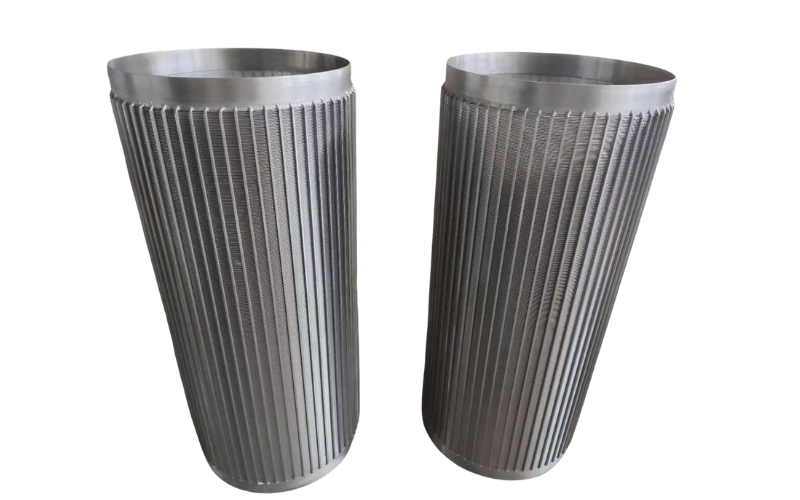Strainer baskets play a critical role in fluid filtration systems. They remove solid particles from liquids, ensuring that fluids flow smoothly and without obstructions. Whether used in industrial settings or residential pipelines, these baskets protect equipment, maintain efficiency, and extend the lifespan of systems they support.
The importance of a strainer basket goes beyond preventing clogs. It safeguards pumps, valves, and other components from damage caused by debris or contaminants. By filtering out particles, the system keeps running effectively and reduces the need for costly repairs.
This article will explore everything you need to know about strainer baskets. We will look at the different types, their typical applications, and the main components that make them effective. You will also learn about proper maintenance, eco-friendly advantages, and cost comparisons to find the best option for your needs.
Understanding strainer baskets will help you choose the right one for your system. Whether you are protecting an industrial machine or managing a residential setup, this guide will provide valuable insights for making an informed decision.
Table of Contents
ToggleWhat is a Strainer Basket?
Strainer baskets play a foundational role in filtration systems by removing unwanted solids from fluids. Acting as the first line of defense, they ensure that downstream equipment is protected from damage or contamination. A strainer basket typically works by intercepting debris, allowing clean fluid to pass through while larger particles are trapped within its mesh or perforated metal structure.
Compared to other filtration devices, such as screens or Y-strainers, strainer baskets are unique in their ability to handle higher debris loads. Screens are relatively simple and effective for minor filtration needs, while Y-strainers, although compact, struggle to match the capacity and efficiency of a well-designed basket. Strainer baskets excel in industrial settings that demand durability and high flow rates, making them the preferred choice for significant filtration tasks.
Filtration Mechanism
Understanding the filtration mechanism of a strainer basket gives you insight into its superior performance. The process begins when the fluid flows into the basket housing, typically through an inlet. Inside, the basket traps debris and solid particles as the fluid works its way through the mesh. The clean fluid exits the system via the outlet, ensuring that only unwanted solids remain confined within the basket.
The direction of flow is critical and typically adheres to a specific design—fluid enters from the outer side of the basket and exits after passing through the inner surface. This deliberate flow pattern ensures that solids are intercepted efficiently without obstructing the fluid movement. Routine maintenance, such as cleaning or replacing the basket, ensures optimal performance and longevity, preventing clogging and reducing downtime in industrial operations.
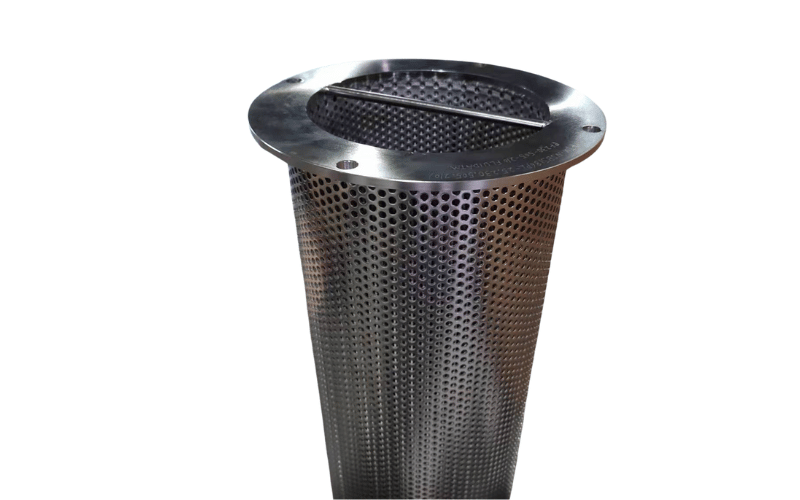
Advantages and Benefits of Strainer Baskets
Strainer baskets are a robust and efficient solution in industrial filtration. Their design and material composition set them apart from other filtration methods, offering a multitude of advantages. Below, we will explore their standout features in terms of durability, environmental impact, and ease of use.
Durability and Longevity
The resilience of strainer baskets stems from their steel construction. Unlike filter bags, which are often single-use and prone to damage, strainer baskets are built to endure high pressure and repeated use without compromising performance. Their stainless steel framework resists wear and corrosion, even in harsh chemical or high-temperature environments. This ensures long-lasting filtration performance while minimizing the need for frequent replacements.
A strainer basket acts as a steadfast guardian of your system, guaranteeing smooth fluid flow without interruption. Its structural integrity can handle abrasive particles, offering protection and reliability for critical operations.
Environmental Friendliness
One of the key benefits of strainer baskets is their contribution to sustainability. Unlike disposable filter bags that generate significant waste, strainer baskets are reusable and significantly reduce disposal needs. Their reusability not only lowers waste output but also decreases operational costs in the long run.
For businesses prioritizing environmental responsibility, strainer baskets provide a greener filtration method. They help reduce your ecological footprint while maintaining the highest standards of efficiency and performance.
Ease of Use and Maintenance
Strainer baskets are designed with simplicity and functionality in mind. Cleaning is straightforward—operators can easily remove the basket, rinse or soak it, and reinstall it. This ease of maintenance reduces downtime and keeps processes running smoothly.
Installation of strainer baskets is equally user-friendly. They are typically mounted with precision to ensure seamless integration into existing systems. With minimal training, operators can manage cleaning and maintenance routines effectively, making these baskets an ideal choice for busy industrial environments.
When it comes to balancing performance, durability, and environmental impact, strainer baskets stand out as an industry leader. Their robust design and practical usability ensure they remain a reliable choice for industrial filtration.
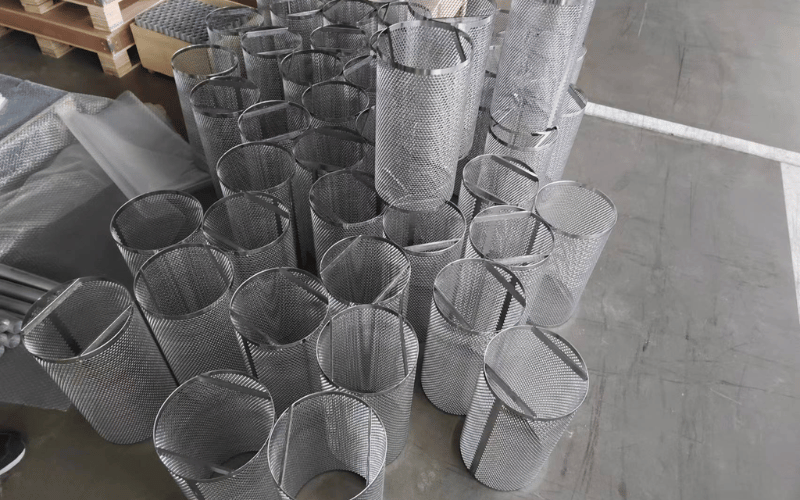
Components and Design of Strainer Baskets
Strainer baskets are far more than simple tools; they are the workhorses of the industrial filtration world. To select the best basket for your application, it’s essential to understand their components and design features. Each element plays a critical role in ensuring efficient and reliable operation.
Materials of Construction (MoC)
The material of your strainer basket is the backbone of performance and longevity. Standard options include stainless steel, carbon steel, plastics, and specialized alloys like Hastelloy or Monel.
Stainless steel stands out as the most popular choice due to its corrosion resistance and compatibility with a wide range of fluids, from water to aggressive chemicals. Carbon steel, on the other hand, is ideal for lower-cost systems handling non-corrosive fluids. Plastics, such as polypropylene or PVC, may fit lightweight or highly corrosive environments where metal is unsuitable. For extreme conditions, like high temperature or corrosive fluids, specialized alloys provide unmatched durability.
Always base your material selection on the fluid’s chemical compatibility, anticipated pressure, and working temperature. This step ensures not only performance but also safety in high-demand environments.
Mesh Sizes and Perforations
Mesh size and perforation patterns directly determine how effectively a strainer basket removes contaminants. A finer mesh, such as 100-micron or lower, suits applications requiring precise filtration of small particles, like food processing or chemical manufacturing. Coarse filtration, ranging from 500 microns and up, is ideal for capturing larger debris in pipelines, as seen in wastewater treatment or oil and gas operations.
For optimal filtration efficiency, always match the basket’s micron rating to your system’s specific needs. Misalignment here can lead to reduced flow rates or insufficient particle retention.
Basket Top Types and Variations
The basket top design influences how the basket integrates with your filtration system. Straight-sided baskets are the standard option, reliable for most applications. Conical or tapered baskets, however, are invaluable for high-pressure systems, as they evenly distribute pressure to prevent structural fatigue.
Slanted tops are great problem-solvers for installations with tight vertical or angled spaces, maintaining performance even in constrained setups. The right basket top can simplify maintenance access and reduce system downtime significantly.
Key Dimensions
When considering the dimensions of a strainer basket, never underestimate its impact on system efficiency. Capacity, diameter, and height should align seamlessly with the size and flow requirements of the system. A basket that’s too small can restrict operations, while overly large designs may add unwanted weight and complicate handling.
Always consult system specifications and measure filtration chambers accurately to avoid misfits. A perfectly matched basket not only ensures smooth operation but also maximizes the overall system’s lifespan.
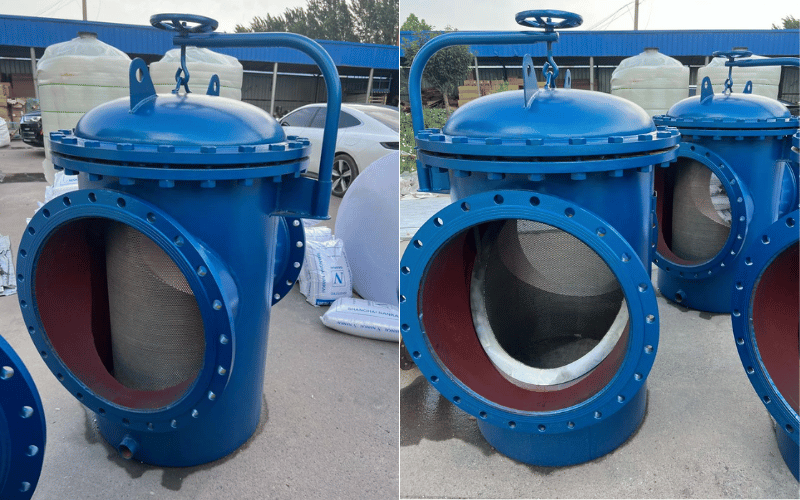
By understanding these crucial design elements, you can make informed decisions when selecting or maintaining strainer baskets. Choose wisely, and these filtration champions will deliver consistent service, even in the most challenging industrial environments.
Applications and Industry Use Cases
Strainer baskets are more than just passive components; they are guardians of efficiency and system integrity. Their versatility allows them to shine in a wide range of applications, each as demanding as the last. Below, we explore specific scenarios where these filtration champions make their mark.
Pipeline Systems
Pipeline systems rely heavily on strainer baskets to maintain uninterrupted operation. By pre-filtering solids, they act as the first line of defense, protecting pumps, flowmeters, and other sensitive equipment from clogs or damage. Without proper filtration, debris can wreak havoc on system components, leading to costly repairs and downtime. Selecting the right basket design for your pipeline is crucial—ensure it matches capacity requirements and the specific types of contaminants your system encounters.
Industrial Applications
Industrial processes are complex ecosystems where even minor inefficiencies can cascade into significant issues. Strainer baskets are essential in:
- Natural Gas Pipelines: They remove sand, rust, and grit to safeguard compressors and valves.
- Manufacturing Processes: Strainers keep operations steady by filtering out machining chips, slag, or other debris from coolants and lubricants.
- Lubrication Systems: Here, they ensure critical components, such as bearings, run smoothly by removing impurities.
Using high-quality, appropriately sized baskets in these environments can prevent breakdowns and improve overall operational output.
Benefits for Major Sectors
Strainer baskets deliver unparalleled value across key sectors such as HVAC, chemical processing, and water treatment. For example:
- HVAC systems benefit from reduced particulate buildup, keeping air handlers and cooling systems working efficiently.
- Chemical Processing plants rely on strainers to ensure product purity and prevent contamination.
- Water Treatment facilities depend on precision filtration to meet regulatory standards for clean water.
Emerging Applications
The world of industrial filtration is evolving rapidly. Strainer baskets are finding innovative roles in eco-conscious industries looking to achieve sustainability goals. For instance, they are used in renewable energy systems to protect turbines from sediment and debris in hydroelectric plants. Similarly, in high-precision processes, such as semiconductor manufacturing, they filter out even microscopic particles to maintain strict quality standards.
Adapting strainer basket technology for these emerging applications requires staying updated on industry trends and working closely with suppliers who understand your unique requirements. Selecting the right partner could mean the difference between efficiency and unnecessary expense.
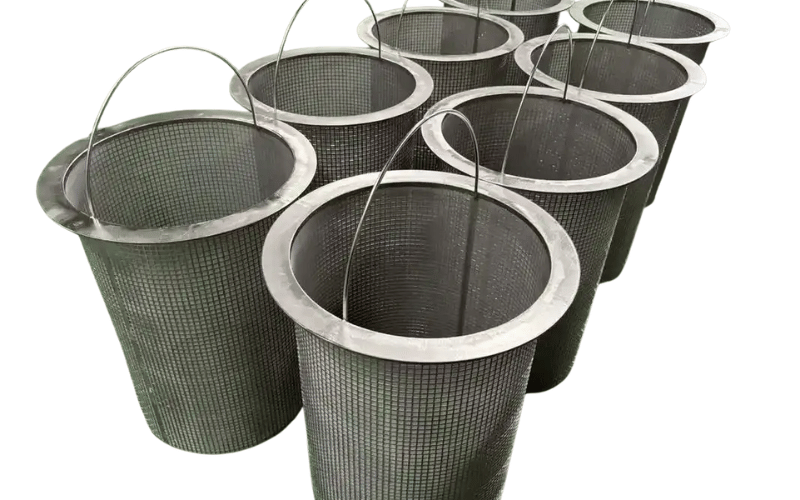
Choosing the Right Strainer Basket
Strainer baskets are the backbone of any efficient filtration system—they silently handle the heavy lifting of removing unwanted particles, ensuring smooth operations and protecting equipment. But choosing the right one takes more than familiarity; it demands precision and foresight. Below, I break down the essential steps and considerations to guide your decision.
Selection Criteria
The selection process starts with three critical factors—flow rate, pressure tolerance, and filtration requirements. Determine the flow rate your system handles daily, as an undersized basket can create bottlenecks or cause equipment strain. Pressure tolerance is equally vital. Your basket must endure operating pressures without deforming or tearing, particularly in high-pressure environments. Lastly, evaluate your filtration requirements based on the size and type of particles you need to capture. Strainer baskets come in various mesh sizes, so match the mesh to your specific use case for optimum results.
Material compatibility is another crucial consideration. For example, if you’re filtering a corrosive chemical, stainless steel might be better suited than a traditional alloy. Remember, an improper material choice isn’t just costly—it can lead to equipment failure or contamination.
Guiding Factors
Operating conditions should always influence your decision. Consider factors such as temperature extremes, particle concentration, and expected wear. Each of these conditions will dictate the basket’s durability and performance over time. For systems with demanding maintenance schedules, ease of access and cleaning should not be overlooked. Quick-release or self-cleaning designs can save hours of downtime.
Long-term costs are often misunderstood. While cheaper materials or designs might seem appealing upfront, they can lead to frequent replacements and repairs. Always aim for long-term value, not short-term savings. A well-designed and durable strainer basket reduces operational disruptions and ensures reliable equipment performance.
Customization Options
For industries with specialized requirements, off-the-shelf options are rarely sufficient. Many manufacturers offer customized strainer baskets tailored to unique operating environments. These designs can include specialized coatings, reinforced frames, or custom mesh configurations. For instance, food and beverage facilities may require food-grade materials, while oil and gas operations often need baskets capable of filtering larger debris in harsh conditions.
Working closely with your supplier during the design phase can unlock practical innovations specific to your industry. Don’t hesitate to ask for prototypes or performance testing to ensure the custom solution meets your standards. After all, a well-suited basket isn’t just a filter—it’s a safeguard for your entire operation.
Cost Comparison of Strainer Baskets
When considering strainer baskets for your operation, it is essential to think beyond the upfront cost. While disposable alternatives, like filter bags, might appear less expensive initially, they often lead to higher maintenance and replacement expenses over time. Strainer baskets, when designed and maintained correctly, offer significant cost savings in the long run. Let’s break this down further to help you make an informed choice.
Initial vs. Long-term Costs
At first glance, filter bags may seem like an economical solution due to their lower purchasing price. However, these disposable items require frequent replacements. Over months or years of operation, this repeated expenditure adds up, often exceeding the cost of a durable, well-designed strainer basket. Strainer baskets, crafted from robust materials like stainless steel, reduce the need for constant replacements, making them a smarter investment.
Maintenance Savings
Reusable strainer baskets shine when it comes to minimizing maintenance costs. Their longevity reduces downtime caused by replacing disposable filters. Over time, these savings compound, freeing up resources to focus on other parts of your operation. Additionally, high-quality baskets can withstand repetitive cleaning processes without compromising their structural integrity, ensuring smooth performance for years to come.
Cost Breakdown Chart
To simplify the decision-making process, here is a basic comparison of budget, mid-range, and premium options for strainer baskets:
|
Option |
Initial Cost |
Lifespan |
Maintenance Cost |
Long-term Value |
|---|---|---|---|---|
|
Budget |
Low |
Moderate |
Higher (Replacements) |
Moderate |
|
Mid-range |
Moderate |
High |
Moderate |
High |
|
Premium |
High |
Very High |
Low |
Excellent |
By understanding and incorporating these cost comparisons into your planning, you can align your filtration system with both your technical needs and financial goals. Selecting the correct strainer basket is not just about cost—it’s about creating efficiency that will serve your operation for years to come.
Operation and Maintenance Tips
Proper operation and consistent maintenance of industrial strainer baskets can extend their lifespan and improve their efficiency. By treating your filtration system as a vital partner in your operation, you can ensure continual peak performance and avoid costly downtime.
Monitoring and Troubleshooting
To keep your strainer baskets functioning optimally, it is crucial to monitor them regularly. You can use pressure gauges as your first line of defense against clogging or pressure loss. An abnormal pressure differential reading often indicates that debris is blocking the basket and action is required. Additionally, regularly inspect the basket for signs of wear, such as distorted mesh, cracks in the structure, or corrosion. These warning signs often signal that replacement is imminent.
By swiftly addressing these issues, you can prevent more extensive damage to your system. Never underestimate your gauges—these simple tools are some of your best advisors.
Cleaning and Longevity Maintenance
Cleaning is a key practice to ensure your baskets last as long as possible. Follow these steps for effective maintenance:
- Shut down the system and ensure all pressure is relieved before removing the strainer basket.
- Take out the basket carefully, avoiding any unnecessary force that can damage the mesh.
- Use a soft-bristle brush or low-pressure water to clean off any trapped debris. Avoid harsh chemicals or wire brushes that can weaken the mesh over time.
- Inspect the cleaned basket for dents, fraying, or wear before reseating it properly.
- Ensure the gasket seal is intact when replacing the basket to prevent leaks or bypass of unfiltered fluid.
By following this protocol, you can prevent pressure drops, maintain flow efficiency, and avoid mesh damage.
Preventive Practices
Establishing preventive maintenance practices keeps your filtration system operating at its best. Create a regular inspection schedule tailored to your specific system usage. Weekly or bi-weekly visual checks and monthly performance monitoring are excellent starting points.
Always keep spare strainer baskets and gaskets in stock. This ensures you can perform quick replacements without disrupting critical operations. Investing in quality storage for these spare parts will also prevent premature wear before they are needed. Remember, a well-prepared operation thrives with minimal downtime.
By consistently adhering to these practices, you can transform your filtration system into a robust and dependable component of your industrial process.
Frequently Asked Questions (FAQs)
Q: What is the difference between a strainer basket and a basket strainer?
A: A strainer basket is the removable component inside a basket strainer.
It catches debris and particles from the fluid.
The basket strainer, on the other hand, refers to the entire unit that houses the strainer basket.
Q: Can strainer baskets be used for microfiltration?
A: No, strainer baskets are typically designed for coarse filtration.
Microfiltration requires specialized filters with finer mesh sizes.
Always check your system’s requirements before use.
Q: How often should strainer baskets be cleaned or replaced?
A: Cleaning frequency depends on the application and particle load.
Inspect the basket regularly for buildup or wear.
Replace the basket if you notice any damage or reduced efficiency.
Q: What are the best materials for specific operating conditions?
A: Stainless steel is ideal for high-temperature or corrosive environments.
Plastic or polymer baskets are better for light-duty applications.
Consult the manufacturer for recommendations tailored to your process.
Q: How do strainer baskets compare to Y-strainers in design and purpose?
A: Strainer baskets are best for applications needing high flow capacity.
Y-strainers are better suited for low flow and smaller particle removal.
Each design has unique advantages depending on operational needs.
Q: What is the maximum particle size a strainer basket can filter?
A: This depends on the mesh size of the basket.
Larger mesh sizes handle coarse particles, while smaller mesh sizes capture finer debris.
Always verify the mesh specifications for your filtration requirements.
Conclusion
Strainer baskets play a crucial role in ensuring efficient fluid systems by removing debris and protecting equipment from damage. Their ability to handle high flow capacities and various particle sizes makes them versatile for numerous applications. Selecting the right materials and properly maintaining the strainer baskets are key to their longevity and effectiveness. To maximize your system’s performance, explore customized filtration solutions tailored to your specific needs. Commit to regular maintenance schedules and adopt eco-conscious filtration practices to achieve sustainable and efficient operations. By doing so, you can ensure optimal functionality and environmental responsibility in your fluid systems.
Related Posts
- Sintered Metal Filters Explained: From Basics to Applications
- Water Filtration in the Food and Beverage Industry: Ensuring Quality, Safety, and Efficiency
- Filtered vs. Distilled vs. Purified Water: Key Differences Explained
- Purified Water in Pharmaceuticals: A Practical Guide to Ensuring Quality and Compliance


